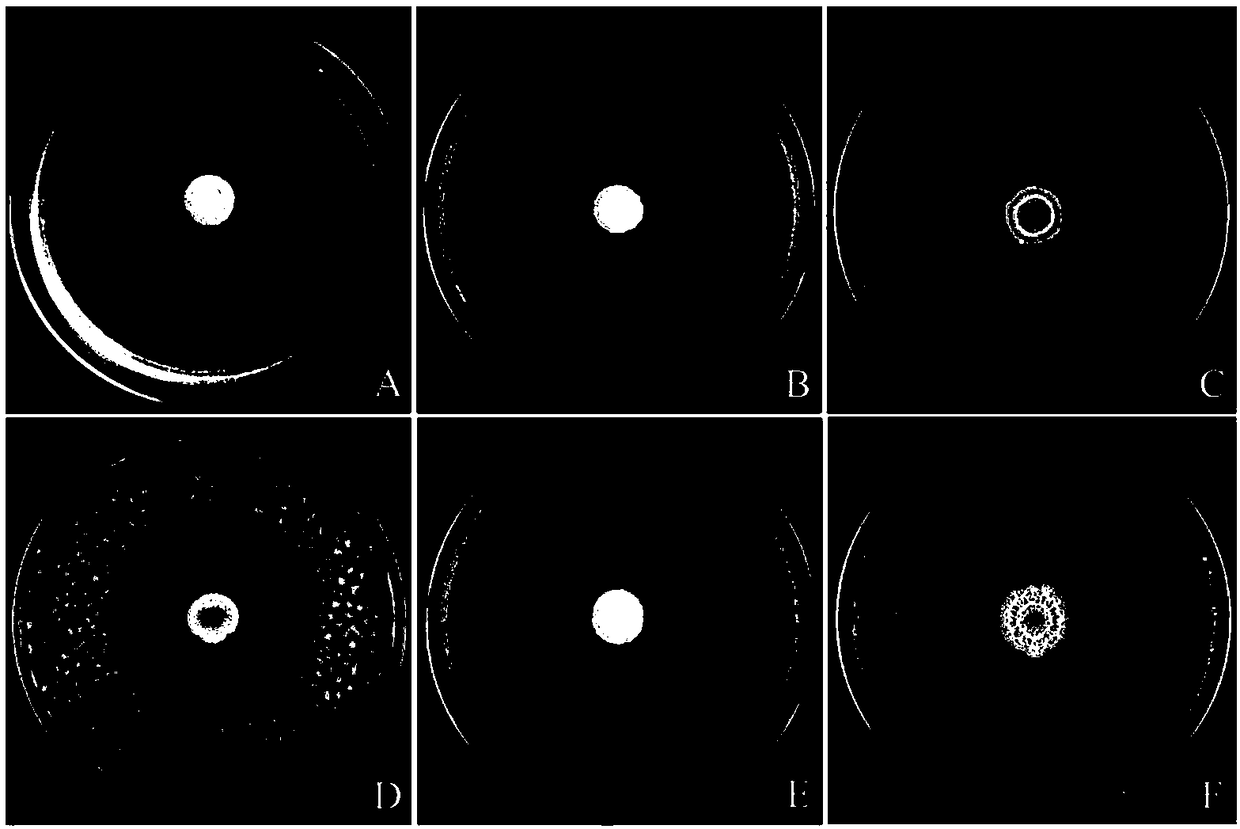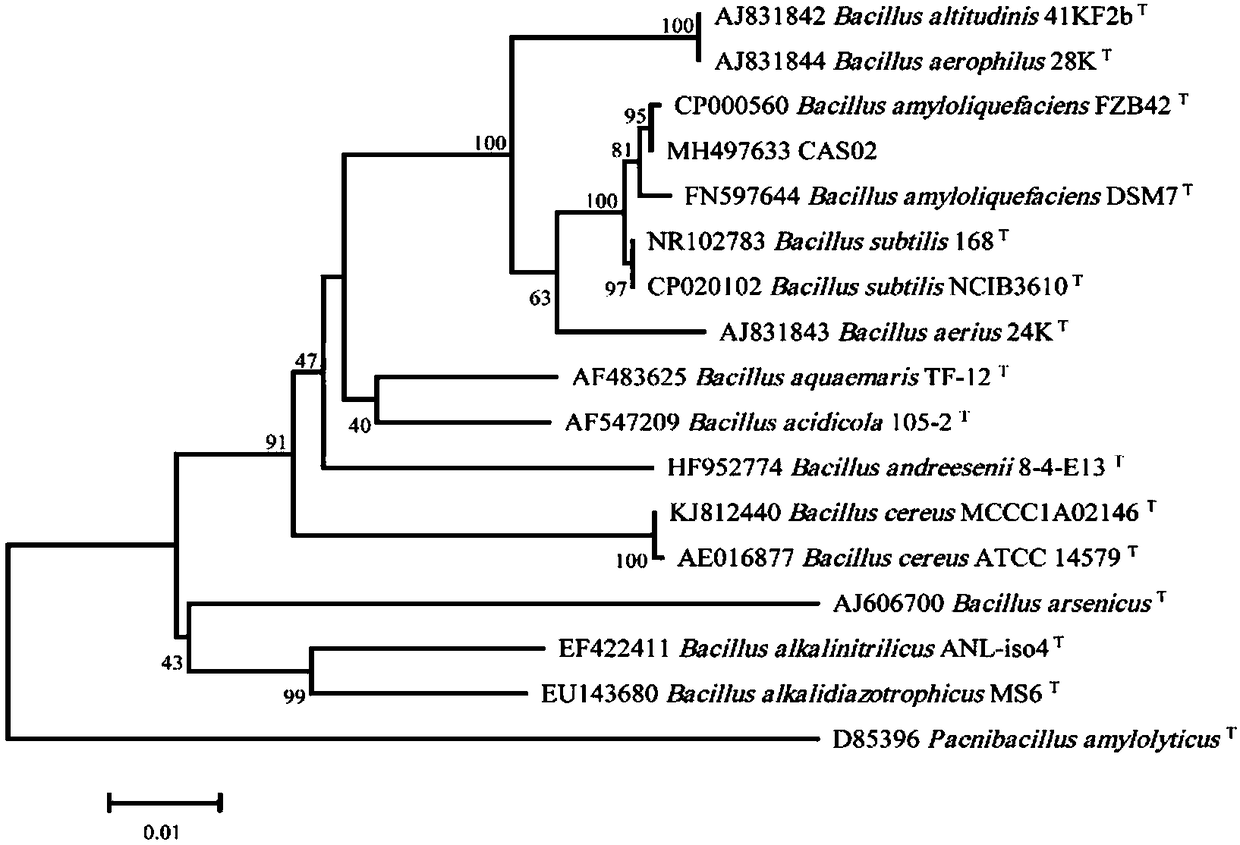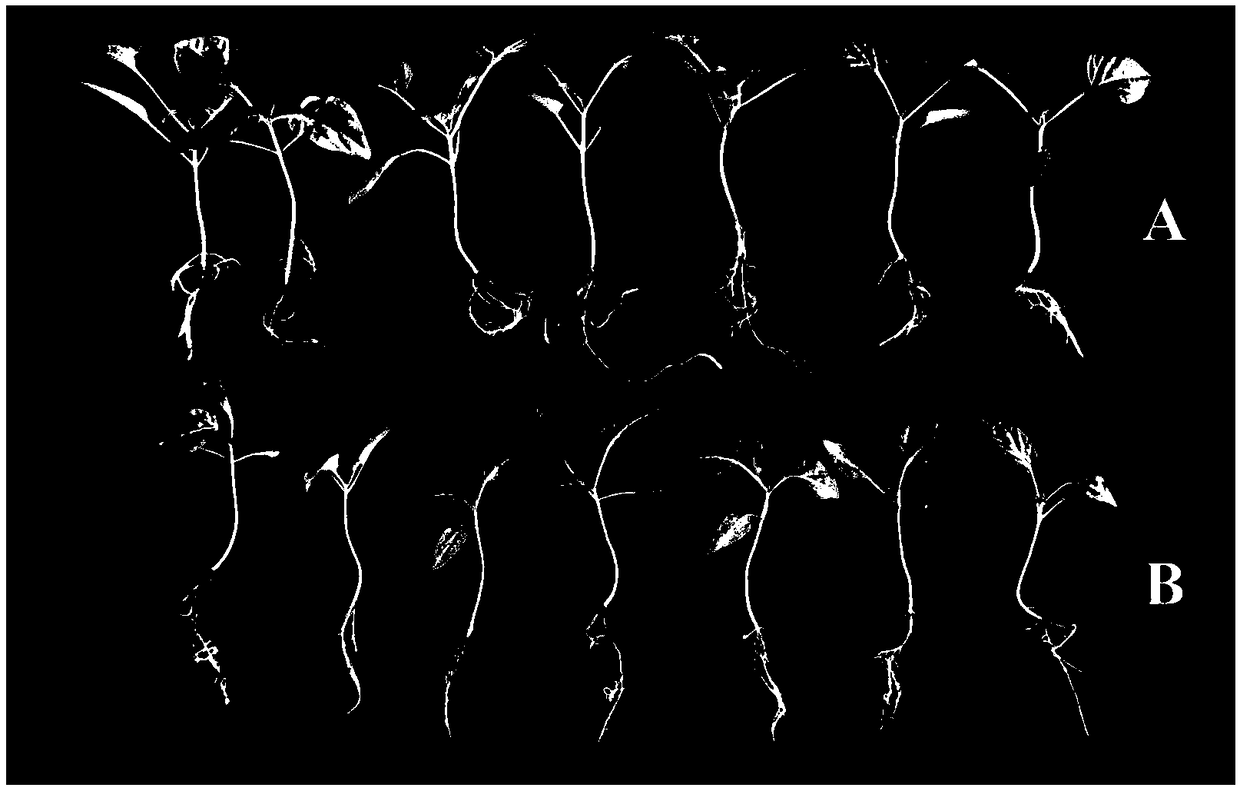Bacillus amyloliquefaciens strain capable of controlling Ralstonia solanacearum effectively and promoting capsicum annuum growth
A technology for dissolving amyloid spores and bacilli, applied in the field of microorganisms, achieves obvious effects of promoting growth, promoting the growth of peppers, and having a wide antibacterial spectrum.
- Summary
- Abstract
- Description
- Claims
- Application Information
AI Technical Summary
Problems solved by technology
Method used
Image
Examples
Embodiment 1
[0048] Embodiment 1: Determination of Bacillus amyloliquefaciens (Bacillus amyloliquefaciens) CAS02 antibacterial ability
[0049] The strain (CAS02) was isolated from tobacco rhizosphere soil in Qingdao, Shandong. The antibacterial ability of the strains against pathogenic bacteria was determined by the confrontation culture method (Sijam et al., 2005). Take 10 μL of bacterial suspension (OD420=0.3) and inoculate it in the center of NBY solid medium with a diameter of 9 cm. After the bacterial solution is fully absorbed, place the culture dish in a 28°C biochemical incubator and incubate it upside down for 72 hours. Then spray OD to NBY medium respectively 420 =0.3 pathogen suspension. The petri dish was transferred to a constant temperature incubator at 28°C again, and after upside-down cultivation for 24 hours, the antibacterial ability of the strain was measured. Xanthomonas campestris MSCT1, Ralstonia solanacearum, Pseudomonas syringae pv.tabaci and Colletotrichum acut...
Embodiment 2
[0050] Embodiment 2: the acquisition of strain 16S rDNA sequence
[0051] Using Bacillus amyloliquefaciens CAS02 genomic DNA as a template, the bacterial 16S rDNA universal primers 27F (5'-AGAGTTTGATCMTGGCTCAG-3') and 1492R (5'-TACGGYTACCTTGTTACGACTT-3') were used to amplify the 16S rDNA sequence. Amplification system and program: 25 μL PCR system contains 5.0 μL of 5×PCR buffer, 1.0 μL of DNA template (100 ng μL-1), 0.75 μL of dNTPs (10 mM), 0.75 μL of forward primer (10 μM), reverse primer ( 10μM) 0.75μL, MgCl2 (25mM) 2.5μL, Taq DNA polymerase (5UμL-1Promega) 0.25μL, and the rest was filled with ddH2O. The PCR amplification program was pre-denaturation at 94°C for 3 min; denaturation at 94°C for 30 s, annealing for 30 s, extension at 72°C for 1 min and 30 s, and 30 cycles. Finally, extend at 72°C for 10min and store at 4°C. After the reaction, the PCR products were analyzed by agarose gel electrophoresis. The obtained fragments were subjected to sequencing analysis. The ...
Embodiment 3
[0053] Embodiment 3: Growth-promoting test of bacterial strain CAS02 in greenhouse
[0054] Transplant pepper seedlings with consistent growth into the sterilized substrate, and when the seedlings grow to two true leaves, suspend and slowly pour CAS02 bacteria into the rhizome of pepper, 20ml per plant. The control group was irrigated with the same volume of Hoagland's nutrient solution. After 28 days, the growth-promoting effect of CAS02 on pepper was measured. Compared with the control, the treatment with CAS02 can significantly promote the growth of pepper plants, the fresh weight of the plants and the height of the above-ground parts increased by 81.25% and 34.23% respectively, and the chlorophyll a and chlorophyll b contents increased by 29.09% and 17.63% respectively compared with the control (Table 1, figure 2 ).
[0055] Table 1 The growth-promoting effect of strain CAS02 on pepper
[0056]
[0057]Note: Data are the average of three replicates. Different lett...
PUM
 Login to View More
Login to View More Abstract
Description
Claims
Application Information
 Login to View More
Login to View More - Generate Ideas
- Intellectual Property
- Life Sciences
- Materials
- Tech Scout
- Unparalleled Data Quality
- Higher Quality Content
- 60% Fewer Hallucinations
Browse by: Latest US Patents, China's latest patents, Technical Efficacy Thesaurus, Application Domain, Technology Topic, Popular Technical Reports.
© 2025 PatSnap. All rights reserved.Legal|Privacy policy|Modern Slavery Act Transparency Statement|Sitemap|About US| Contact US: help@patsnap.com



